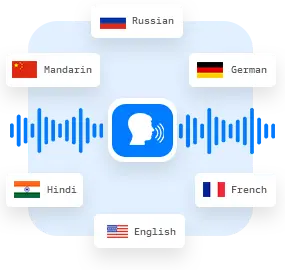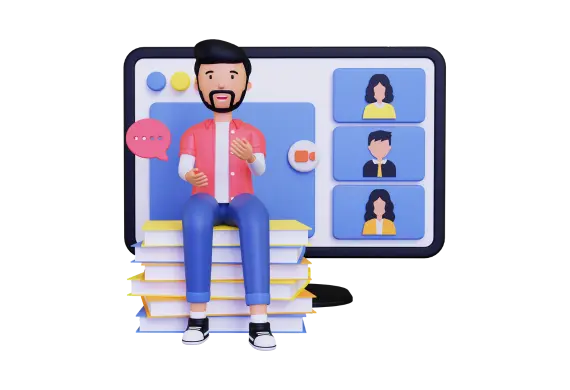Introduction
The digital age is here, and it’s not slowing down. For online creators, adapting to emerging technologies is no longer optional; it’s a necessity. One of the most groundbreaking developments in the field of online creation is Artificial Intelligence (AI) Text to Speech technology. This article delves deep into the topic of Ai text to speech for online creators, offering expert opinions, insights, and actionable advice.

The Rise of Online Creators
The Boom in Content Creation
In today’s digital landscape, online content creation is more than just a hobby; it’s a full-blown career. With platforms like YouTube, Medium, and Substack, people are finding more avenues to express their creativity and make a decent living out of it. However, as this space becomes more competitive, the pressure to produce high-quality and frequent content is mounting.
Monetization Strategies for Online Creators
From ad revenues and affiliate marketing to selling digital products, there are numerous ways online creators can monetize their content. However, these revenue streams usually demand a considerable time investment, which can be overwhelming. This is where Ai text to speech technology comes into play, offering a scalable solution.
The Quest for Scalability
As the audience grows, so does the demand for content. Online creators often find themselves at the crossroads of producing quality content and maintaining consistency. This is a crucial balancing act, and failing to achieve it can result in a loss of audience and revenue. Enter Ai text to speech, a technology that allows creators to automate and scale their content production, making life considerably easier.
Introduction to Ai Text to Speech
What is Ai Text to Speech?
Ai Text to Speech, often abbreviated as TTS, is a form of speech synthesis that converts written text into spoken words using artificial intelligence algorithms. This technology has evolved significantly over the years, with advancements in machine learning and deep neural networks making the generated voices sound increasingly human-like.
How Does It Work?
Most Ai text to speech engines use a combination of machine learning models, language databases, and algorithms to produce speech that mimics human intonation and expression. They typically follow a two-step process: text analysis and speech generation. In the text analysis phase, the text is broken down into phonetic components, while the speech generation phase focuses on producing these phonetic elements in a sequence that sounds natural.
Applications in Different Industries
While Ai text to speech technology was initially developed to aid visually impaired individuals, it has found applications across various sectors, including customer service, advertising, e-learning, and entertainment. Its versatile nature makes it a valuable asset for any industry that relies on audio content.
How Online Creators are Utilizing Ai Text to Speech

Podcasting
For podcast creators, the Ai text to speech technology can be a game-changer. Imagine having a script for your podcast episode and converting it into high-quality, natural-sounding audio within minutes. This not only speeds up the content creation process but also gives you more time to focus on marketing and community engagement.
E-Learning Platforms
E-learning has been on the rise, and Ai text to speech can be used to create interactive courses that are engaging and accessible. Whether it’s an audiobook, an online tutorial, or a virtual classroom, this technology allows creators to produce a diverse range of educational content without the need for expensive equipment or specialized skills.
Virtual Assistant Tools
Ai text to speech is also finding its way into the development of virtual assistant tools. These voice-activated platforms rely on the technology to carry out tasks and respond to user queries. It adds an interactive and dynamic layer to the user experience, making it more engaging and practical.
Advantages of Ai Text to Speech for Online Creators
Time Efficiency
One of the most glaring benefits of using Ai text to speech is the time-saving aspect. What would typically take hours to record, edit, and produce can now be accomplished in a fraction of the time.
Cost-Effectiveness
Hiring voice actors or purchasing expensive recording equipment can be a significant financial burden for online creators. Ai text to speech provides a cost-effective solution, allowing you to produce high-quality audio without breaking the bank.
Versatility and Scalability
The ability to produce content in multiple languages and accents opens up a world of opportunities for online creators. Not only does it allow you to reach a global audience, but it also enables you to scale your content production seamlessly.
Accessibility and Inclusivity
Bridging the Gap
Ai text to speech can make online content more accessible to people with disabilities, such as visual impairment or learning difficulties. It serves as an inclusive tool that bridges the gap between creators and a broader range of audiences.
Benefits to Differently-Abled Audience
By converting text-based content into audio format, online creators can make their work more easily consumed by those who face difficulties in reading or viewing content on screens. This inclusive approach has the added advantage of broadening your audience base.
Challenges and Pitfalls
Voice Quality
Despite advancements in Ai text to speech technology, achieving natural-sounding voice is still a challenge. It’s essential for creators to choose the right provider to ensure the voice output matches the quality and tone they desire.
Ethical Concerns
Another point of contention is the ethical considerations surrounding Ai text to speech. The technology is capable of mimicking human voices, raising concerns about identity theft and authenticity.
Technical Limitations
While Ai text to speech is relatively easy to implement, it may require some level of technical expertise, particularly if you’re looking to integrate it with other software or platforms. This could pose a challenge for creators who are not tech-savvy.
Future Prospects
Deep Learning and Naturalness
The future of Ai text to speech looks promising, with ongoing research and development in the field of deep learning aiming to make the generated voices even more natural and expressive.
Multi-Lingual Support
As the technology continues to advance, we can expect to see better multi-lingual support, allowing online creators to cater to a more diverse and global audience.
Voice Synthesis Personalization
The next frontier in Ai text to speech is personalized voice synthesis. Imagine having the ability to customize the voice output to match the preferences of individual users; the possibilities are endless.
Ai Text to Speech Providers
OpenAI’s GPT-3
One of the leading players in the Ai text to speech landscape is OpenAI, with its GPT-3 engine. Known for its natural-sounding voice and high level of customization, it’s a popular choice among online creators.
Textalky
Textalky is an innovative AI text-to-speech software that turns any text or script into lifelike natural human voices in just 3 easy steps. It’s designed to cater to various needs such as e-learning, marketing, podcasts, and video creation. Listen to some Demo voices.
Google Text-to-Speech
Another reliable option is Google’s Text-to-Speech API, which offers a range of voices and languages, making it suitable for a wide array of applications.
IBM Watson
IBM Watson is also a contender in the Ai text to speech market, offering a robust and versatile platform for businesses and creators alike.
Making the Switch: Is It Right for You?
Assessing Your Needs
Before making the switch to Ai text to speech, it’s crucial to assess your needs and goals as an online creator. The technology is versatile, but it may not be suitable for all types of content.
Cost vs. Benefit Analysis
A detailed cost vs. benefit analysis can help you determine whether the investment in Ai text to speech technology will yield a profitable return.
Trial and Error
The best way to ascertain if Ai text to speech is right for you is through trial and error. Most providers offer free trials, giving you an opportunity to test the waters before committing.
Best Practices for Implementing Ai Text to Speech
Fine-Tuning Voice Output
Experimenting with different voice tones, speeds, and accents can help you achieve the desired output that resonates with your audience.
Leveraging for SEO
Believe it or not, Ai text to speech can also aid in your SEO efforts. By converting text to audio, you can create an additional layer of content that can be indexed by search engines, boosting your online visibility.
Integrating with Other Tools
Integrating Ai text to speech with other software or platforms can enhance the user experience, making your content more dynamic and interactive.
Frequently Asked Questions
Can Ai Text to Speech Replace Human Narrators?
While Ai text to speech technology has come a long way, it’s not yet at the point where it can entirely replace human narrators, especially for content that requires emotional depth and nuance.
How Accurate is Ai Text to Speech?
The accuracy of Ai text to speech largely depends on the provider you choose. Leading platforms offer up to 99% accuracy, making them reliable choices for most applications.
How Secure is Ai Text to Speech?
Security is a significant concern when it comes to any form of technology. Trusted providers ensure that data is encrypted and follow stringent privacy regulations to keep your information safe.
Conclusion
The landscape of online content creation is rapidly changing, and technologies like Ai text to speech are at the forefront of this transformation. If you’re an online creator looking to scale, engage, and optimize, embracing Ai text to speech could be the game-changing solution you’ve been searching for.